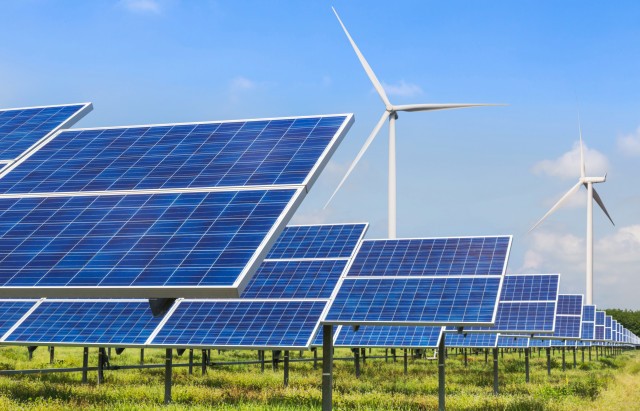IEA in a report said renewable power capacity additions are expected to rise this year to 320 gigawatts – equivalent to an amount that would come close to meeting the entire electricity demand of Germany or matching the European Union’s total electricity generation from natural gas.
The world added a record 295 GW of new renewable power capacity — for generating electricity from solar, wind and other renewables — in 2021, overcoming supply chain challenges, construction delays and high raw material prices, according to the IEA’s latest Renewable Energy Market Update.
Solar PV will account for 60 percent of global renewable power growth in 2022, followed by wind and hydropower.
In the European Union, annual additions jumped by almost 30 percent to 36 GW in 2021, exceeding the bloc’s previous record of 35 GW set a decade ago.
The additional renewables capacity commissioned for 2022 and 2023 has the potential to significantly reduce the European Union’s dependence on Russian gas in the power sector. The actual contribution will depend on the success of parallel energy efficiency measures to keep the region’s energy demand in check, IEA said.
Renewables’ growth this year is much faster than initially expected, driven by strong policy support in China, the European Union and Latin America, which are more than compensating for slower than anticipated growth in the United States.
The US outlook is clouded by uncertainty over new incentives for wind and solar and by trade actions against solar PV imports from China and Southeast Asia. Based on today’s policy settings, however, renewable power’s global growth is set to lose momentum next year.
The amount of renewable power capacity added is expected to plateau in 2023, as continued progress for solar is offset by a 40 percent decline in hydropower expansion and little change in wind additions. While energy markets face a wide range of uncertainties, the strengthened focus by governments on energy security and affordability – particularly in Europe – is building new momentum behind efforts to accelerate the deployment of energy efficiency solutions and renewable energy technologies.
The outlook for renewables for 2023 and beyond will therefore depend to a large extent on whether new and stronger policies are introduced and implemented over the next six months. The current growth in renewable power capacity would be even faster without the current supply chain and logistical challenges.
The cost of installing solar PV and wind plants is expected to remain higher than pre-pandemic levels throughout 2022 and 2023 because of elevated commodity and freight prices, reversing a decade of declining costs. However, they remain competitive because prices for natural gas and other fossil fuel alternatives have risen much faster.
Global additions of solar PV capacity are on course to break new records in both this year and next, with the annual market reaching 200 GW in 2023. Solar’s growth in China and India is accelerating, driven by strong policy support for large-scale projects, which can be completed at lower costs than fossil fuel alternatives.
In the European Union, rooftop solar installations by households and companies are expected to help consumers save money as electricity bills rise. Policy uncertainties, as well as long and complex permitting regulations, are preventing much faster growth for the wind industry. New onshore wind capacity plunged 32 percent in 2021 after exceptionally high installations in 2020. New onshore wind capacity is expected to recover slightly this year and next.
New additions of offshore wind capacity will drop 40 percent globally in 2022 after a huge jump in China as developers rushed to meet a subsidy deadline. Global additions will be over 80 percent higher this year than in 2020.
China will surpass Europe at the end of 2022 to become the market with the largest total offshore wind capacity in the world.
Biofuel demand recovered in 2021 from its pandemic lows to reach more than 155 billion litres – near 2019 levels. Demand is expected to keep rising – by 5 percent in 2022 and 3 percent in 2023. However, the impacts of Russia’s invasion of Ukraine have contributed to a 20 percent downward revision of our previous forecast for biofuel growth in 2022.

